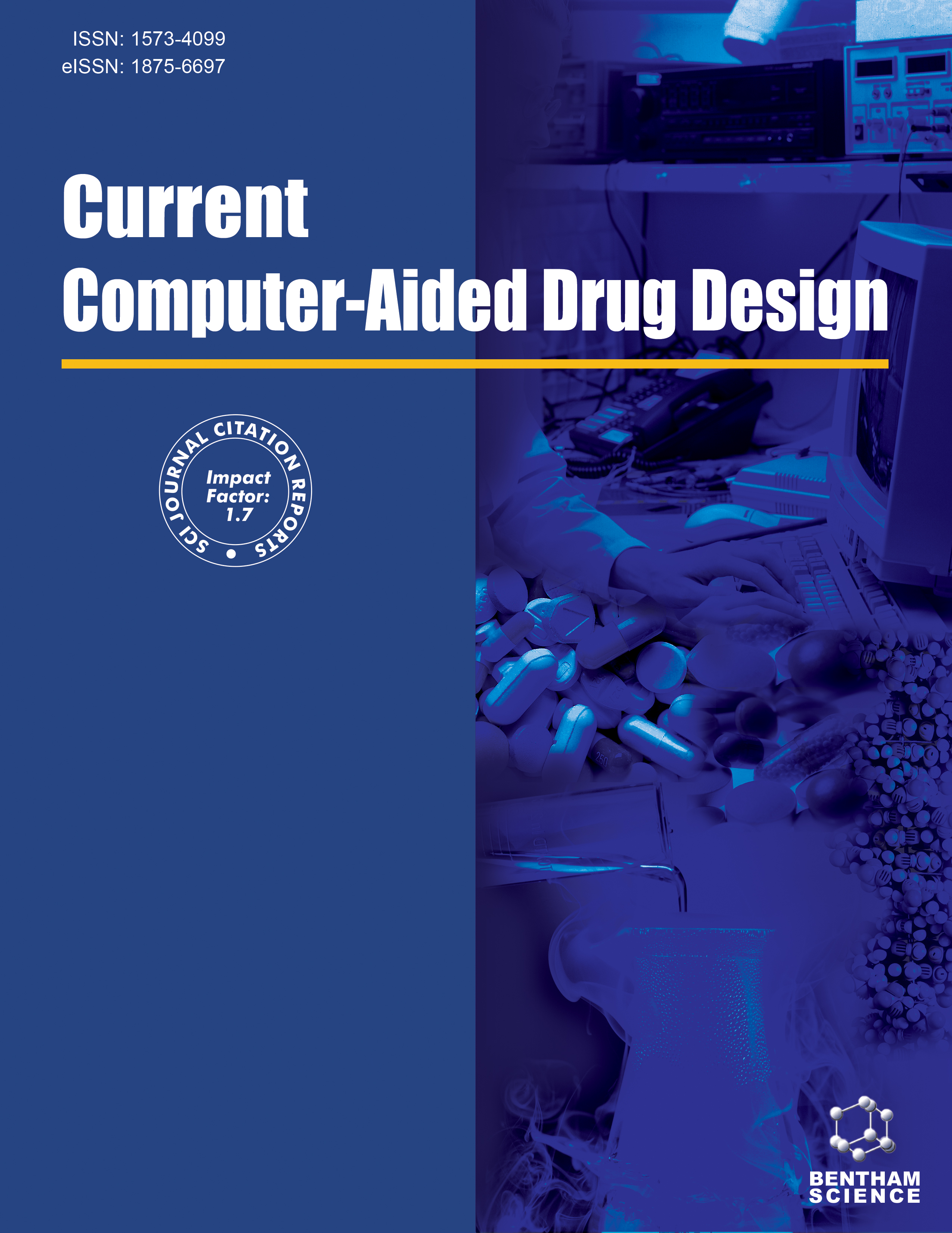- Home
- A-Z Publications
- Current Computer - Aided Drug Design
- Previous Issues
- Volume 2, Issue 1, 2006
Current Computer - Aided Drug Design - Volume 2, Issue 1, 2006
Volume 2, Issue 1, 2006
-
-
Computational Methods for Analysis of High-Throughput Screening Data
More LessAuthors: Konstantin V. Balakin and Nikolay P. SavchukThe huge data sets produced by high-throughput screening (HTS) technologies have created a tremendous challenge for the drug discovery industry. Rapid processing of HTS data and identification of hits are essential in order to accelerate the discovery of quality lead compounds. In addition to finding active compounds among those screened, it is useful to identify the molecular features associated with the activity. To Read More
-
-
-
QSAR Studies of Non-Nucleoside Reverse Transcriptase Inhibitors: The Hydrophobic Effect
More LessAuthors: L. Douali and D. CherqaouiNon-nucleoside reverse transcriptase inhibitors (NNRTIs) are promising compounds in the search for potent and selective drugs for the treatment of AIDS. Although they are structurally diverse, the NNRTIs exhibit a striking similarity in their mode of action on the reverse transcriptase (RT) hydrophobic pocket. Several quantitative structure-activity relationship (QSAR) studies have been devoted to the HEPT and TIBO derivati Read More
-
-
-
QSAR Studies on Blood-Brain Barrier Permeation
More LessAuthors: Juan M. Luco and Eduardo MarchevskyThis review focuses on both physicochemical and theoretical QSAR methods for the prediction of drug transport across the blood-brain barrier (BBB). Special emphasis is given to the recent progress that has been made in the modeling of BBB penetration, with a particular focus on the models based on kinetic parameters of BBB permeability dataset. Physicochemical models based on partition coefficients and chromato Read More
-
-
-
Atomic-Level Rational Drug Design
More LessAuthors: Maria J. Ramos and Pedro A. FernandesThis work is concerned with rational drug design at the atomic level. Some fundamental stages of rational drug design are addressed, namely the atomic level understanding on disease-related enzymatic mechanisms and inhibition, which is a pre-requisite to any attempt to rationally design new, better inhibitors; the rational optimization of a lead compound, through chemical modifications that increase its affinity and/or spec Read More
-
-
-
New Developments and Applications of Docking and High-Throughput Docking for Drug Design and in silico Screening
More LessAuthors: Philippe Ferrara, John P. Priestle, Eric Vangrevelinghe and Edgar JacobyIn this review we describe progress in docking and especially high-throughput docking (HTD) for applications in drug design and in silico screening. Computational methods that are used in HTD to assist drug design involve two steps: docking and scoring. Several current docking programs have the ability to generate protein-ligand configurations that are close to the correct structure, as revealed by X-ray crystallography, in man Read More
-
Volumes & issues
-
Volume 21 (2025)
-
Volume 20 (2024)
-
Volume 19 (2023)
-
Volume 18 (2022)
-
Volume 17 (2021)
-
Volume 16 (2020)
-
Volume 15 (2019)
-
Volume 14 (2018)
-
Volume 13 (2017)
-
Volume 12 (2016)
-
Volume 11 (2015)
-
Volume 10 (2014)
-
Volume 9 (2013)
-
Volume 8 (2012)
-
Volume 7 (2011)
-
Volume 6 (2010)
-
Volume 5 (2009)
-
Volume 4 (2008)
-
Volume 3 (2007)
-
Volume 2 (2006)
-
Volume 1 (2005)
Most Read This Month
Article
content/journals/cad
Journal
10
5
false
en


